Poster maker
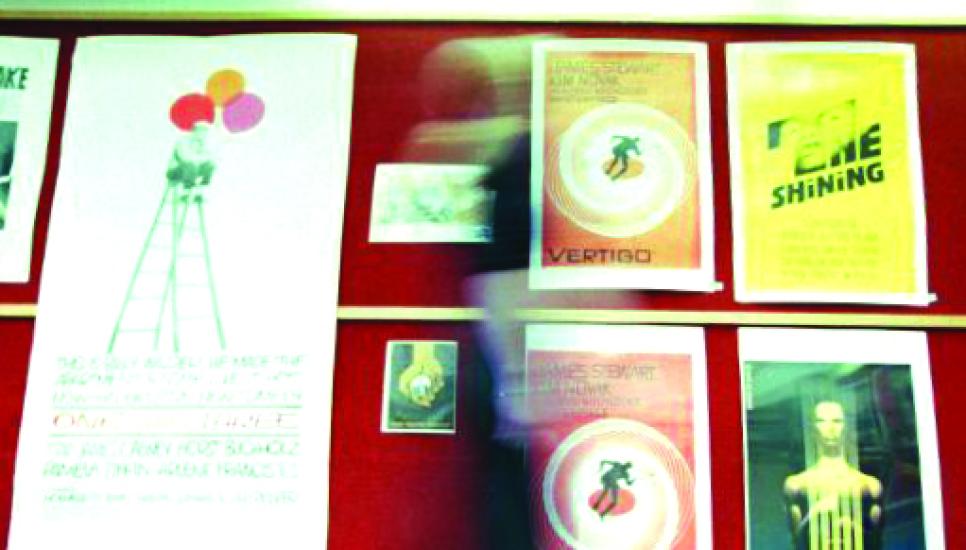
Vintage movie posters offer far more than a chance to share in a passion for films. The finest early posters are highly collectible works of art that have enjoyed great investment returns in recent years.
The record paid for a movie poster is £397,762 (€481,713) for an art deco advert for the 1927 futuristic film Metropolis directed by Fritz Lang. The sepia-coloured poster stands seven foot tall and provides an image of monumental skyscrapers with the iconic beautiful female robot, Maria, staring out.
The poster was sold in 2005 by the Reel Poster Gallery in Notting Hill, west London. Bruce Marchant, co-owner of Reel Poster, says: “It is the most fantastic example of art deco I have ever seen – just standing in front of it made my spine tingle. To me this poster was a work of art comparable with the greats – a Picasso – but as an almost unique print was a fraction of the price. It has an image that stands out like an Andy Warhol. Today if this same poster was on the market it might fetch £650,000.”
The poster was created by painter and graphic artist Heinz Schulz-Neudamm for the German filmmaker UFA. There are only five of these Metropolis posters known to exist and three of them are in museums. Extreme rarity is key to why the poster is so valuable – but the artwork and influential role in movie history is what makes it so sought after by art lovers and collectors in the first place.
Marchant explains: “There was no market for movie posters when these posters were made – they have only started becoming collectible investments in the last 20 years or so. Originally they would be pasted up and then torn down after the films had shown to be thrown away. They were also seen as fire hazards so warehouses that stored the posters for distribution would also bin them once the film run had finished. It is incredible any have survived at all – they are valuable as pieces of movie history as well as works of art.”
The iconic Metropolis image was born out of the German expressionist movement of the early 20th century. Such films influenced by German expressionism, which makes use of shadows, camera angles and atmosphere, were picked up by Hollywood to create the film noir style of motion picture – paving the way for the future of cinema.
Das Cabinet des Dr Caligari is a German expressionist film of 1919, originally released in tints of green, brown and blue – not just black and white. There are only three copies of the Dr Caligari poster known to exist and they were all in museums until one came on the market last year. It had been kept in the Albertina museum in Vienna but was given back to the family of the original Jewish owner after a lengthy court battle. Family ownership of the poster had been lost during Nazi occupation when he had been forced to sell it for pennies at the start of World War II. The Reel Poster Gallery believes it is worth £300,000.
Marchant says: “Dr Caligari is a landmark. It is a terrific film but the art of the poster is also breathtaking.” Dr Caligari was a seminal film directed by Robert Weine in that it not only influenced film noir but was also a blueprint for the horror film genre.
There are no examples of original promotional posters for another early great German expressionist classic, the 1921 Nosferatu, known to have survived – if you found one it would be priceless. Nosferatu was based on the blood-sucking vampire Dracula created by Bram Stoker. The director, Friedrich Wilhelm Murnau, was not granted copyright to use the name so used the Romanian translation instead.
Horror posters are among the most valuable as they attract an avid group of enthusiasts in a genre ideally suited to exciting movie poster artwork. As with all film posters, bold eye-catching images are vital to the appeal because their aim was to grab the attention of people passing cinema billboards to entice them to come and watch the movie.
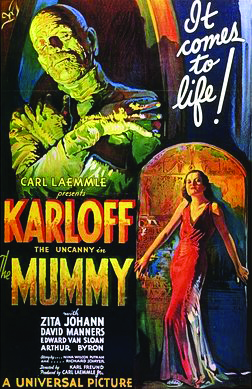 The previously most expensive horror poster promoted the 1932 film The Mummy in one of Boris Karloff’s first starring roles. The Mummy poster sold for £299,000 in 1997 as one of only four originals known to exist. The iconic “it comes to life” mummy image was shocking for its time and designed by artist Karoly Grosz for Universal Pictures.
The previously most expensive horror poster promoted the 1932 film The Mummy in one of Boris Karloff’s first starring roles. The Mummy poster sold for £299,000 in 1997 as one of only four originals known to exist. The iconic “it comes to life” mummy image was shocking for its time and designed by artist Karoly Grosz for Universal Pictures.
The first officially titled Dracula film was released in 1931 and an original Dracula poster fetched £213,000 at an auction in 2009. The film starred the actor Bela Lugosi, picked for the role of Dracula in the film after proving such a hit when playing the part in an earlier Broadway stage play.
But perhaps the most beloved of all early horror film characters is Frankenstein, as portrayed by Boris Karloff. An original poster for the first Frankenstein movie released in 1931 sold for £136,000 in 1997 – but might sell for more than double this amount today. The 1935 sequel to the original, The Bride of Frankenstein, has attracted great attention among investors, too.
This sequel also starred Boris Karloff and used the skills of English director James Whale, who was also in charge of the original. The Bride of Frankenstein original poster sold for £230,000 in 2007. However, a unique surviving teaser – a poster used to promote films before arriving at the cinema – for The Bride of Frankenstein failed to reach its reserve last year despite expectations it might sell for £430,000.
The poster has a blood-red image of the monster calling out “I demand a mate! Who will be the bride of Frankenstein?” and like all great movie poster art still enjoys an appeal that has not aged.
Another horror classic – as with most of the others made by Universal Pictures – is The Black Cat. This legendary horror film is unique for starring the two great horror actors of the era – Karloff and Lugosi. A 1934 movie poster of this Edgar Allan Poe tale sold at auction in 2009 for £197,000.
Unlike other works of art, movie posters suffer from not always being credited. The Bride of Frankenstein teaser poster is one such example where the artist is unknown. Marchant says: “There are many great artists who went unrecognised. The American studios in particular used a pool of talent and the posters created were often left uncredited. However, artists were given more credit in Europe.”
Among the greatest Europeans was Russian-born Boris Grinsson who designed posters for French audiences. His eye for painting beautiful women was ideal when depicting femme fatales for movies starring actresses such as Rita Hayworth. An original poster for the 1946 film Gilda starring Hayworth by Grinsson can go for £10,000.
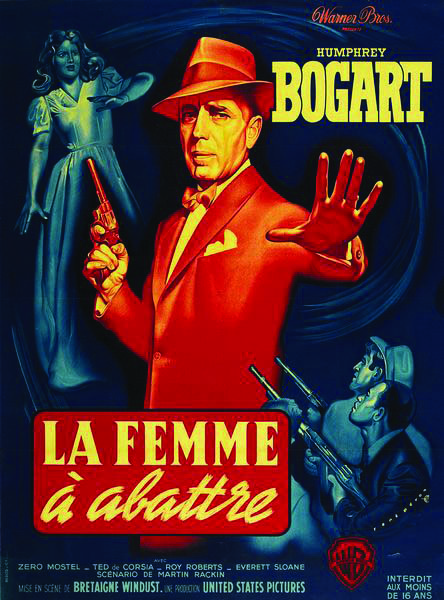 French artist René Péron also added his own imaginative twist to Hollywood film noir classics and did several starring Humphrey Bogart. For example, the 1951 The Enforcer, known in France as La Femme à Abattre, by Péron might go for £15,000 – more than an original American poster provided by an unknown artist.
French artist René Péron also added his own imaginative twist to Hollywood film noir classics and did several starring Humphrey Bogart. For example, the 1951 The Enforcer, known in France as La Femme à Abattre, by Péron might go for £15,000 – more than an original American poster provided by an unknown artist.
Another great interpreter of American classics is Anselmo Ballester who did Italian posters. An original 1947 poster for The Lady from Shanghai (La Signora di Shanghai) starring Orson Welles and Rita Hayworth with a signature printed by the artist can go for £25,000 – five times an American example. Italian poster artist Luigi Martinati is another highly sought- after name among collectors.
Rachel Reilly, film poster specialist at auction house Christie’s in London, points out the timeless appeal of certain actors and genres also helps turn the posters into investments. She says: “James Bond is a great example, as he seems to capture the imagination of every new generation – what man does not at some point wish he was James Bond? In 2011, we sold some original concept artwork by Robert McGinnis for a Diamonds are Forever poster for £79,250 – more than three times the estimate.”
A 1962 poster of the first Ian Fleming film adaptation Dr No sold for £11,250 in 2008 – more than five times the valuation. A decade ago it might have been picked up for less than £1,000. A poster for the 1963 film From Russia With Love sold for £6,500 in 2008, while a pair of unique posters designed to cover cinema pillars as a promotion for the film sold for £28,000 in 2009.
If the poster includes an iconic Hollywood star, such as Marilyn Monroe, Humphrey Bogart, Cary Grant, Sean Connery or Audrey Hepburn, it benefits from international appeal.
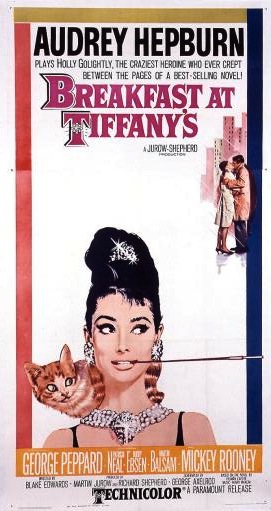 Reilly says: “One of the most collectible actors at the moment is Audrey Hepburn – the Japanese just love her. The image portrayed in Breakfast at Tiffany’s is the most iconic. We sold a poster for this film in 2011 for £12,500.” Casablanca is another film that grabs the attention of every generation; with a cast and script to ensure the classic is always in fashion.
Reilly says: “One of the most collectible actors at the moment is Audrey Hepburn – the Japanese just love her. The image portrayed in Breakfast at Tiffany’s is the most iconic. We sold a poster for this film in 2011 for £12,500.” Casablanca is another film that grabs the attention of every generation; with a cast and script to ensure the classic is always in fashion.
A 1942 single-sheet poster – 27 inches by 40 inches (68.6 centimetres by 101.6 centimetres) – promoting Casablanca sold for £30,000 at auction in early 2011 – way beyond a £5,000 to £7,000 estimate. Foreign release posters of the film are also popular and a French promotional poster sold for £45,000 in 2007. An original American six-sheet poster for Casablanca could sell for £100,000. Movie poster sizes vary from country to country but the most popular is the old American one-sheet measuring 27 inches by 40 inches.
However, the large American six-sheet 81 inch square poster is also highly collectible but more rare as few survived. The six-sheets were often printed on paper in four sections and pasted on walls outside the theatre. Variations include three-sheet posters, banners, teaser posters, lobby cards and larger billboards.
Reilly says: “One of the great beauties of investing in film posters is that there is something for everyone. But there are certain images – such as Audrey Hepburn with her black dress and cigarette holder playing Holly Golightly in Breakfast at Tiffany’s – that make them stand out as special.”
One of the earliest unforgettable images in movies is that of Charlie Chaplin with his trademark bowler hat and cane made famous in 1915 with his endearing comic character The Tramp. The iconic poster image of this character and a young boy in his 1921 film The Kid is one of the most sought after. Despite there being many reprints and copies over the years the very earliest originals are extremely rare and are valued at up to £150,000.
Another great poster image of Chaplin is the one used for the 1931 City Lights – which still featured no dialogue years after the “talkies” had arrived. The art deco design of a tramp silhouette looking out on to a New York skyline is iconic and a rare original can command up to £100,000.
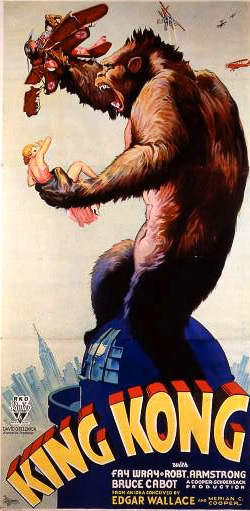 Another great Hollywood moment is when King Kong is attacked by biplanes at the top of the Empire State Building in the 1933 film. A rare poster for the RKO Pictures movie sold for £168,000 in 1999 but it might fetch double this amount on the market today.
Another great Hollywood moment is when King Kong is attacked by biplanes at the top of the Empire State Building in the 1933 film. A rare poster for the RKO Pictures movie sold for £168,000 in 1999 but it might fetch double this amount on the market today.
Although there are plenty of iconic moments in later movies, it tends to be the earliest posters that fetch the highest prices as so few survive.
For example, one of the most recognisable posters of all time is the Saul Bass designed image of a falling man for the 1958 Alfred Hitchcock movie Vertigo. It can still be picked up for less than £5,000 while 20 years ago it could have been purchased for £300.
One of the great attractions of investing in movie posters is they can be kept on show and decorate the home rather than be hidden away under lock and key. But it is important to ensure they have had anti-acid treatment and are professionally linen-backed. Posters should always be hung in dry rooms away from direct sunlight behind specialist ultra-violet filtered clear plastic.






